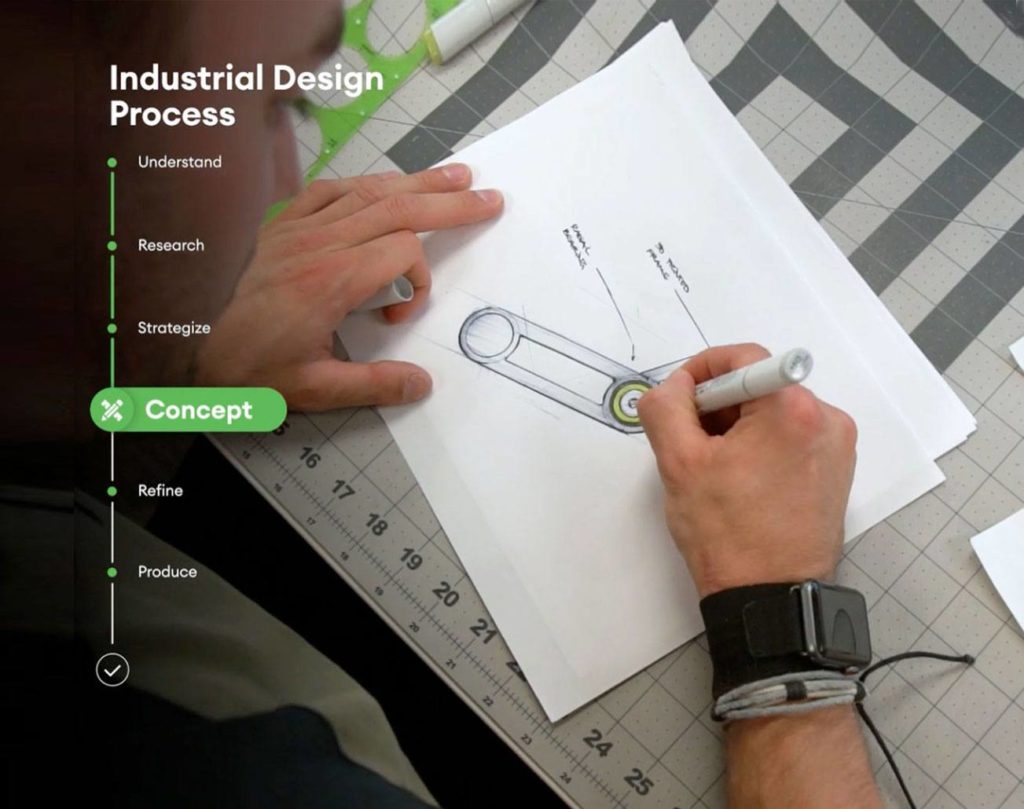Article
UI/UX Principle #22: Writing is a Key Ingredient in UX

Written content isn’t just a semblance of words tacked onto a web page.
Content is a key component that shapes UX. The UX design process takes place in a variety of stages. It follows a trajectory of ideation and iteration that leads to a high-quality end product. Writing is a central part of that process.
The reason is that well-written copy contributes to the look, feel, and usability of your site. It allows users to easily navigate the page. It enables them to quickly find important calls to action. With ease, they can access content that is relevant to their goals in using your product.
Good writing can take your website beyond being just another pretty page. It’s a key component in creating a holistic easy-to-use user experience. Make sure that it falls in line with the rest of the user experience by taking it as seriously as the rest of your design.
Storytelling in Design Often Stems from Great Writing
Great writing reinforces the story you are telling and the experience you are creating.
Business Insider’s Ariel Schwartz writes about how Airbnb builds trust through words. Trust is an important concept to Airbnb. After all, the viability of their business model rests upon strangers trusting one another enough to share a living space.
Schwartz interviewed Alex Schleifer, Airbnb’s head of design. He writes “Phrasing is a big part of how Airbnb gets customers to trust its interface. ‘The voice and tone is relatively curious, and it asks questions that feel a little more human than filling in a field. This generates empathy and trust between parties.’”
Designers establish voice and tone through a combination of means. Writing is one of a designer’s most valuable tools. The words included in a form influence a user’s emotional response to filling it out. The written instructions in an onboarding process establish the credibility of your brand. Within seconds, users decide whether you are trustworthy and whether they want to enlist your services.
In Airbnb’s case, word choice has played a significant role in the user experience. They’ve used words to establish high levels of trust and credibility. This is illustrated by the rapid growth, financial success, and immense popularity of the company.
Design Clarity and Scannability are Impacted by Writing
Interactions in UX design should be simple, clear, and accessible.
It’s vital for designers to strive for simplicity and clarity. In our related blog post, we wrote “Users want speed, functionality, and intuitive usability. The nature of their attention spans demands it.”
This same principle holds true for writing. Modern attention spans are short. Your content must have quick delivery, while maintaining functionality and usability. Strive to achieve this with the copy you write. Users should have easy access to key points and important messages through clear writing.
In a post about how people scan websites rather than reading them, we wrote “Users don’t read websites the way they read other material; they scan quickly to find information that is most pertinent to them.” This is an important point to reiterate. Keep your writing short, sweet, and to the point. And above all, make it scannable.
Write with Personas and User Stories in Mind to Better Connect with Your Audience
A design should account for personas and user stories. Writing should do the same.
It’s crucial to use data to inform our design choices. Conducting research allows designers to gather important information, create personas, and craft user stories. These ensure that the design satisfies the goals of the end user.
Discussing the importance of creating personas to foster empathy for the end user, we suggested that “Without thoroughly understanding our users – their comprehensive unspoken motivations and needs – we risk creating products that fail to serve them.”
This is true for writing as well. In our web writing and technical writing, we are not the audience. Empathy needs to guide the decisions we make about how to string words and ideas together. The messages we forward need to make sense to the people who are going to be interacting with them.
Building user stories to guide user flows is also important. We wrote that “There are a multitude of ways to craft your own user stories, but they are best when there is a person (or user) involved in the story.”
There are important questions that must be asked. Who is your user? What is his or her goal in using your product? What would they expect to get out of reading your written content?
Personas act as the central protagonists in user stories. Make sure to keep the focus on the people who matter most in the UX equation: the users. Remember, you are not writing for yourself. The content you write needs to make sense to the people who are reading it.
Writing is Key to Usability, and It Needs Testing Too
From the information hierarchy and navigation to the buttons and copy, writing is a key part of user direction and user comprehension. Like any other deliverable, it can be tested for usability. In fact, the tasks and user stories may only need a change in the writing to make them easier to complete. Design, functionality, and flow may be overarching targets for improvement. But a change in text could be all that is necessary.
Not sure if it will make sense or allow the end user to accomplish their goal? Usability testing can be the tool that allows you to find out. The way someone moves a mouse or traces their finger across the screen is indicative of usability. You can test the cognitive usability of your writing as well by analyzing how easy it is to read.
In an article on how a little usability testing goes a long way, we argued that testing is vital. It allows us to understand if our designs make sense to the end user. For the sake of this post, we’ve taken the same idea and inserted writing terms for design terms:
“While [copy] might make perfect sense in the mind of a [writer], the experience of [reading] it is often full of frustration for users. No matter how much forethought has been put into the [writing process], crucial details are lost in the rapid process of ideation, iteration, and execution of a design.”
There’s a maxim in writing that it’s helpful to have “a fresh pair of eyes” to look over your content. Written words will, as a general rule, make sense to the person who wrote them. But we have to think about what will make sense to the end user.
Don’t have enough time or manpower to engage in multiple rounds of proofreading? Try using a tool like Sharethrough to analyze how engaging your headlines are. Use the Hemingway Editor to make sure your writing is bold and clear. Even if you conduct a little usability testing, you’re doing yourself and your website or product a huge favor.
Writing Should Not Be an Afterthought
Writing is a key ingredient in UX design. It’s not something to tack on at the end of the design process. If treated using the same principles and best practices, it can drastically improve the user experience.
By ensuring that your writing is simple and clear, you grant easier access to key points and high-level messages. To ensure its relevance, create personas and user stories to foster empathy. Usability testing is also a tool to make sure your writing is engaging, bold, and crystal clear. Integrating great writing with great design will create a cohesive user experience. This should be top of mind throughout the design process.









